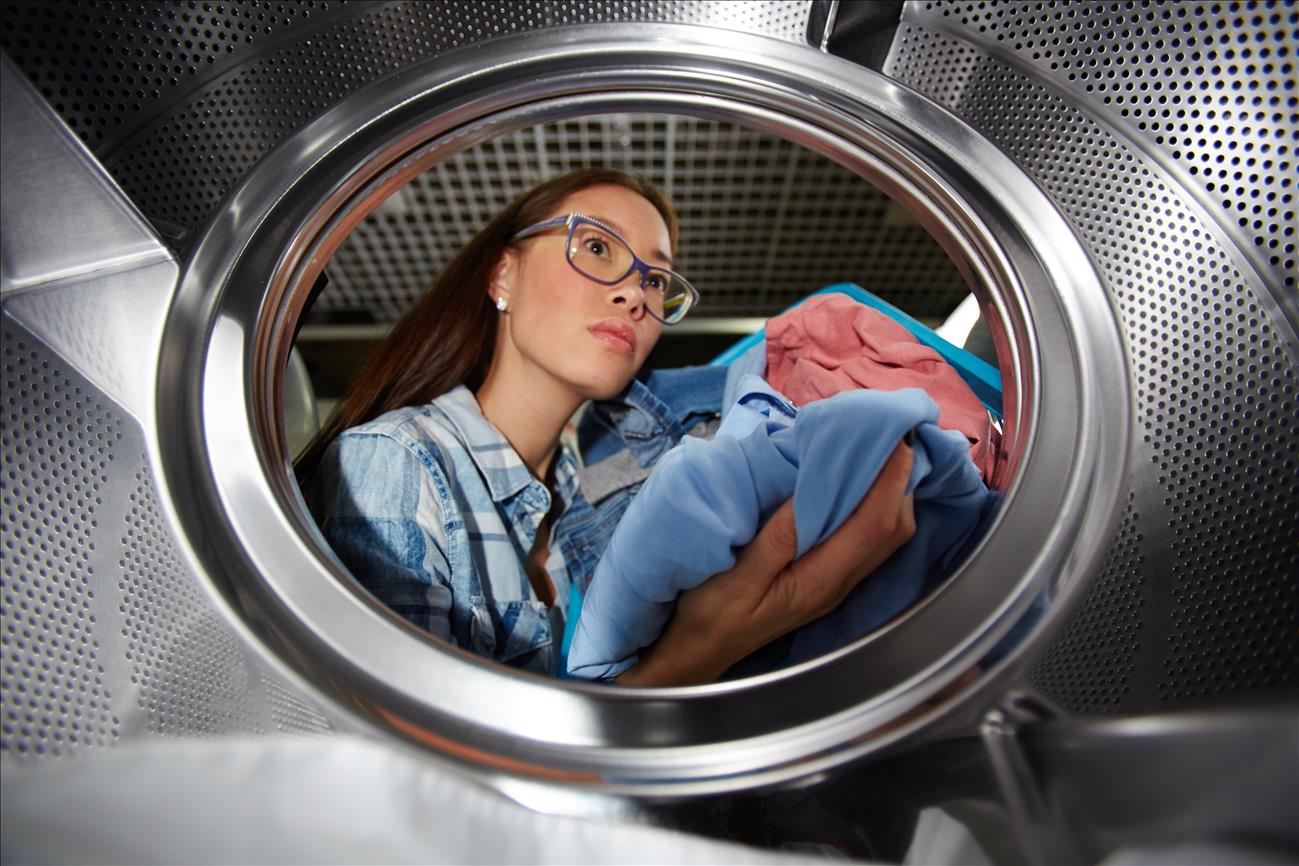How to Prevent and Remove Mold in a Washing Machine Easily


Mold in a washing machine is a common yet often overlooked problem that can affect both the cleanliness of your laundry and the health of your household. A washing machine, designed to clean your clothes, can ironically become a breeding ground for mold due to the moisture and detergent residues left behind after each cycle. This not only leads to unpleasant odors but also compromises the hygiene of your laundry, potentially transferring mold spores to your clothes.
Whether you’re dealing with a persistent musty smell or visible black spots in your machine, understanding the causes and solutions for mold in a washing machine is crucial. In this guide, we’ll explore what leads to mold growth, how to remove it effectively, and—most importantly—how to prevent it from coming back. By the end, you’ll have the tools and tips you need to keep your washing machine fresh, clean, and mold-free.
What Causes Mold in a Washing Machine?
Mold in a washing machine thrives in environments that are damp, dark, and poorly ventilated—conditions that washing machines often provide. Understanding the root causes of mold growth can help you tackle the issue effectively and prevent it from recurring.
Excess Moisture
Washing machines, especially front-load models, are prone to retaining moisture after each use. The rubber gasket that seals the door is a common culprit, as water tends to collect in its folds. This lingering dampness creates an ideal environment for mold spores to grow.
Detergent and Fabric Softener Residue
Using too much detergent or the wrong type can leave behind a sticky residue in the drum, detergent drawer, and other parts of the machine. This buildup not only attracts dirt but also serves as a food source for mold. Fabric softeners, in particular, can exacerbate the problem by leaving an oily layer that traps moisture.
Lack of Ventilation
Closing the washing machine door immediately after use traps moisture inside. Without proper airflow, the interior remains humid, encouraging mold growth.
Front-Load vs. Top-Load Machines
Front-load washing machines are more susceptible to mold compared to top-load models due to their design. The horizontal drum in front-load machines prevents complete drainage, leading to water accumulation in the gasket and drum. Top-load machines, on the other hand, drain more effectively and allow better airflow when left open.
Irregular Cleaning and Maintenance
Neglecting regular cleaning of the drum, gasket, and detergent dispenser allows mold to take hold and spread. Routine maintenance is essential to prevent buildup and eliminate mold-friendly conditions.
By identifying these common causes of mold in a washing machine, you can take proactive steps to mitigate the risks and maintain a cleaner, healthier appliance. Up next, we’ll discuss how to recognize the signs of mold so you can address the issue early.
Signs of Mold in Your Washing Machine
Spotting mold in a washing machine can sometimes be straightforward, but subtle signs may go unnoticed until the problem becomes severe. Knowing what to look for can help you address mold issues before they affect your laundry and home.
Unpleasant Odors
One of the earliest and most noticeable signs of mold is a persistent musty or sour smell emanating from your washing machine. This odor can transfer to your laundry, leaving freshly washed clothes smelling less than fresh.
Visible Black or Green Spots
Check the rubber gasket (in front-load machines), the detergent drawer, and the drum for black, green, or gray spots. These discolorations are often colonies of mold that thrive in moist, neglected areas of the machine.
Slimy Residue
Mold growth may produce a slimy or sticky layer on the machine’s interior surfaces, especially in areas where detergent residue has built up. Running your fingers along the gasket or detergent drawer might reveal this telltale sign.
Moldy or Stained Laundry
If mold is present, your laundry may emerge with visible stains or a damp, earthy smell. This is a clear indicator that the mold spores are contaminating your clothes during the wash cycle.
Inefficient Cleaning Performance
When mold builds up, your washing machine may struggle to clean effectively. Clothes might come out less clean or even with residual particles clinging to them.
By being vigilant for these signs of mold in your washing machine, you can take action before the issue worsens. In the next section, we’ll dive into practical steps to remove mold and restore your washing machine to a clean, fresh state.
How to Remove Mold in a Washing Machine
If you’ve identified mold in your washing machine, don’t worry—removing it is entirely possible with the right tools and techniques. Follow these steps to tackle the mold effectively and restore your washing machine to a clean, hygienic condition.
Tools and Materials Needed
Before you begin, gather the following items:
- White vinegar
- Baking soda
- Commercial mold remover (optional)
- Microfiber cloths or sponges
- Soft-bristled brush
- Gloves
- Hot water
Step-by-Step Cleaning Guide
Clean the Rubber Gasket
- Inspect the rubber gasket (for front-load machines) for visible mold or grime.
- Wipe it thoroughly with a microfiber cloth soaked in white vinegar.
- Use a soft-bristled brush to scrub the folds and crevices of the gasket, ensuring all mold is removed.
- Rinse the gasket with warm water and dry it with a clean cloth.
Clean the Detergent Drawer
- Remove the detergent drawer and soak it in hot, soapy water.
- Scrub away any mold or residue using a sponge or brush.
- Rinse the drawer thoroughly and let it air dry before reinserting it into the machine.
Run a Cleaning Cycle
- Add 2 cups of white vinegar directly into the drum of the washing machine.
- Run a hot water cycle without any laundry. Vinegar helps kill mold and remove odors.
- For an extra boost, sprinkle ½ cup of baking soda into the drum during the rinse cycle.
Wipe Down the Drum and Exterior
- Once the cycle is complete, use a damp microfiber cloth to wipe down the drum and other interior surfaces.
- Clean the exterior of the machine to remove any remaining dust or grime.
Deep Cleaning Tips for Persistent Mold
Use a Commercial Mold Cleaner
- If the vinegar and baking soda method doesn’t fully remove the mold, consider using a commercial mold remover. Follow the manufacturer’s instructions carefully.
Clean the Drain Pump Filter
- Mold and debris can accumulate in the drain pump filter, causing odors and reducing efficiency. Consult your washing machine’s manual to locate and clean this filter.
Call a Professional
- For severe mold issues that persist despite cleaning, you may need to contact a professional appliance cleaner to assess and resolve the problem.
By following these steps, you can effectively remove mold in your washing machine and restore its performance. In the next section, we’ll explore preventative measures to ensure mold doesn’t return.

Preventing Mold in a Washing Machine
Once you’ve removed mold from your washing machine, the key to maintaining a clean and fresh appliance is prevention. Implementing simple habits and routines can significantly reduce the risk of mold growth.
Regular Maintenance Tips
Keep the Door Open After Use
- Always leave the washing machine door slightly ajar after each cycle to allow air circulation and prevent moisture buildup.
Dry the Rubber Gasket
- After every wash, wipe the rubber gasket with a dry cloth to remove any lingering water. This small step can make a big difference in preventing mold.
Use the Right Amount of Detergent
- Overusing detergent leaves behind residue that fosters mold growth. Follow the manufacturer’s recommendations for the correct amount and type of detergent.
Periodic Cleaning Routine
Monthly Cleaning Cycle
- Run an empty cycle with hot water and 2 cups of white vinegar once a month to keep the drum and other components clean.
- Add ½ cup of baking soda during the rinse cycle for extra cleaning power.
Clean the Detergent Drawer and Filter
- Remove and clean the detergent drawer regularly to prevent mold and residue buildup.
- Check the drain pump filter periodically, as trapped debris can lead to odors and mold.
Proper Laundry Practices
Avoid Leaving Wet Laundry in the Machine
- Wet clothes left in the drum can create a damp environment where mold thrives. Transfer laundry to the dryer or hang it to dry immediately after the cycle ends.
Wash Items Prone to Mold Separately
- Clothes like gym wear, towels, and swimsuits are more likely to carry mold spores. Wash these items promptly and avoid letting them sit damp in the machine.
Choose Mold-Resistant Products
Opt for High-Efficiency (HE) Detergents
- High-efficiency detergents produce fewer suds, reducing the chances of residue buildup.
Use Mold-Inhibiting Solutions
- Consider adding a mold-inhibiting product, such as a washing machine cleaner or a natural mold-prevention spray, to your cleaning routine.
Common Myths About Mold in Washing Machines
When it comes to mold in washing machines, misinformation can lead to ineffective solutions or worse, exacerbate the problem. Let’s dispel some common myths and provide clarity on how to manage and prevent mold effectively.
Myth 1: Only Old Washing Machines Get Moldy
Reality:
Mold can develop in any washing machine, regardless of its age. While older machines may have more wear and tear, brand-new machines are equally susceptible if they aren’t maintained properly. Regular cleaning and ventilation are critical for all machines.
Myth 2: Bleach Is the Only Solution for Mold
Reality:
While bleach is effective at killing mold, it’s not the only solution. White vinegar and baking soda are excellent alternatives, especially for those looking for non-toxic cleaning options. Commercial mold cleaners can also be used for stubborn cases.
Top-Load Machines Don’t Get Moldy
Reality:
Although top-load machines are less prone to mold than front-load models due to better drainage and airflow, they are not immune. Detergent residue, improper ventilation, and irregular cleaning can still lead to mold in top-load machines.
Myth 4: Running Hot Water Cycles Is Enough to Prevent Mold
Reality:
While hot water can help clean your machine, it’s not a standalone solution. Mold thrives in detergent residue and moisture, so regular maintenance, such as wiping down the gasket and cleaning the detergent drawer, is necessary in addition to running hot water cycles.
Myth 5: Mold in a Washing Machine Won’t Affect Laundry
Reality:
Mold can leave a musty odor on clothes and even cause visible stains. Over time, it can also spread to the rest of your home, affecting indoor air quality and potentially triggering allergies or respiratory issues.
Myth 6: You Can Ignore Mold If It’s Not Visible
Reality:
Just because you can’t see mold doesn’t mean it’s not there. Invisible mold spores can linger in damp areas of the machine, leading to odors and contamination. Regular cleaning is essential even if there are no visible signs of mold.
By debunking these myths, it becomes clear that preventing and managing mold in a washing machine requires consistent care and informed practices. In the next section, we’ll answer frequently asked questions to further address any concerns you might have.

FAQs About Mold in a Washing Machine
To provide even more clarity, here are answers to some frequently asked questions about mold in washing machines. These insights will help address common concerns and ensure you’re fully equipped to deal with this issue.
Q1: Can mold in a washing machine make you sick?
Yes, mold in a washing machine can affect your health, especially if you’re sensitive to mold or have allergies. Mold spores can spread to your laundry and into the air, potentially causing respiratory problems, skin irritation, and other allergic reactions.
Q2: How often should I clean my washing machine to prevent mold?
It’s recommended to deep clean your washing machine once a month. Regular maintenance, such as wiping the gasket and keeping the door open after each use, should be done after every wash cycle.
Q3: What’s the best cleaner for removing mold in a washing machine?
White vinegar and baking soda are effective natural solutions for removing mold. For severe cases, a commercial washing machine cleaner or mold remover may be necessary. Always follow the manufacturer’s instructions when using commercial products.
Q4: Can I prevent mold in a washing machine by only using hot water?
While hot water can help kill some mold and bacteria, it’s not enough on its own. Mold prevention requires proper cleaning, ventilation, and minimizing detergent residue.
Q5: Why does mold occur more often in front-load washing machines?
Front-load machines are more prone to mold due to their horizontal drum design, which allows water to collect in the rubber gasket. Additionally, the sealed door prevents airflow, creating a humid environment where mold thrives.
Q6: Are there specific detergents that prevent mold?
High-efficiency (HE) detergents are recommended, as they produce fewer suds and reduce residue buildup. Avoid using too much detergent, as excess can lead to mold-friendly conditions.
Q7: Can I use bleach regularly to keep mold away?
While bleach is effective at killing mold, frequent use can damage your washing machine’s components. It’s better to alternate with gentler options like vinegar and baking soda for routine maintenance.
Q8: Is it necessary to clean the detergent drawer and filter?
Yes, the detergent drawer and filter are common areas where mold and residue accumulate. Cleaning these components regularly is crucial for preventing mold and maintaining optimal machine performance.
Q9: Should I call a professional for severe mold issues?
If mold persists despite thorough cleaning, or if you notice structural damage to your machine, it’s best to consult a professional. They can assess the situation and provide tailored solutions.
Conclusion
Mold in a washing machine is a common issue that can affect your laundry’s freshness, your appliance’s performance, and even your home’s hygiene. By understanding the causes—like excess moisture, detergent residue, and poor ventilation—you can take proactive steps to prevent its growth. Regular maintenance, such as wiping down the gasket, cleaning the detergent drawer, and running monthly cleaning cycles with natural solutions like vinegar and baking soda, is essential.
Additionally, adopting proper laundry practices, such as avoiding overloading detergent and promptly removing wet clothes, can go a long way in keeping your washing machine mold-free. With these simple yet effective measures, you can ensure your laundry stays fresh, your washing machine lasts longer, and your home remains a healthier space. Take the first step today, and for expert help, explore the services available at Billy.com.
